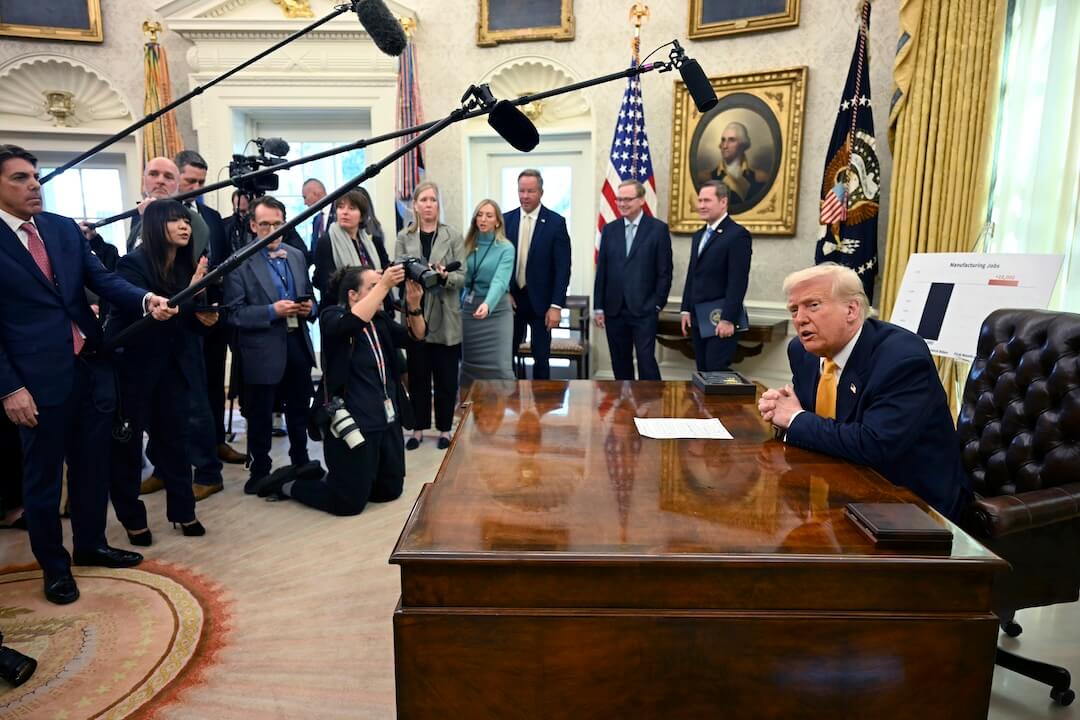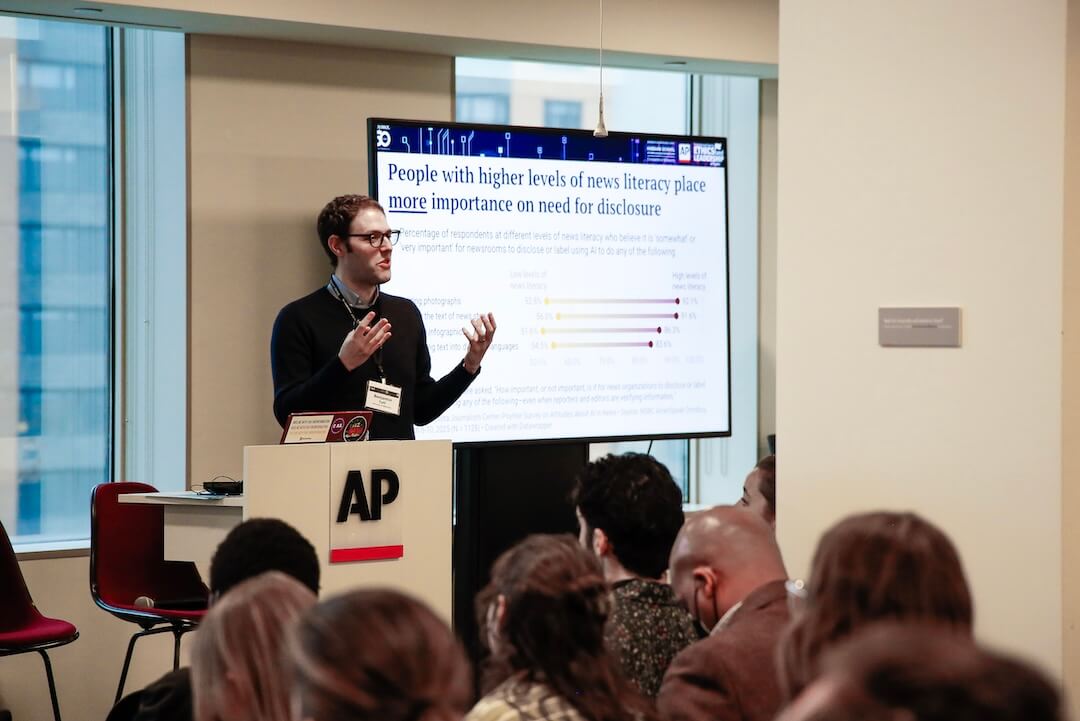The murder of five employees of an Annapolis, Maryland newspaper by a reader nursing a years-long grudge over a story on his criminal conviction for harassing a woman was a horrifying, extreme example of a harsh reality editors everywhere face every day: Some people get really, really angry about the news and it’s a daily slog to defuse that rage and educate the public on the vital role of the press in a free society.
In an era of tribal politics and hateful discourse, against a backdrop of the president’s relentless vilification of the press as “enemies of the people,” and with polls including a Poynter survey showing only one in five Republicans trusts the news media, there is more vitriol being spewed and magnified by online trolls and bots than most of us can remember in our lifetimes.
After the horrific attack at the Capital Gazette, it’s more important than ever that we take every opportunity – in our stories, on our “about” tabs on homepages, and in encounters with the public – to explain our mission: Who we are, what we do, why it matters.
“Part of my job as editor is to write measured replies to people who are in such a spitting rage over what they read in the paper that I wonder how they function in daily life,” Dallas Morning News editor Mike Wilson tweeted after the shooting, an observation echoed by editors I talked to from newsrooms across the country.
“Journalism has always been a dangerous business – we go into conflicts and we deal with people with a lot at stake and high emotion,” Wilson told me. In most cases, critics vent their anger but don’t harm anyone. “The vast majority of our readers, even ones who are upset, communicate in a forceful but reasonable way, and we end up having a good conversation.”
But new technology and shifting standards of public discourse have changed how people rage at journalism and journalists. Twenty-five years ago, angry readers had to put effort into writing a letter, buying a stamp, and mailing it to the editor. Today, social media, email, and other digital tools offer “an easy way in their worst moment to communicate their worst thoughts. There’s no barrier to saying the most vile thing you can think of,” Wilson said.
Robyn Tomlin, executive editor of the News & Observer in Raleigh and the Herald-Sun in Durham, North Carolina, said, “Every journalist everywhere had a very visceral response to what happened [in Annapolis], because we all know that person who is angry and irrational and in some cases shows up.” She’s been threatened over unflattering stories, had her tires slashed and her car keyed.
“There’s always been people who hated journalists – we tell stories that people don’t want to tell, we show up at moments in their lives that are chaotic and hard, and people get upset. But there's something that’s changed, fundamentally shifted,” Tomlin said, “whether it’s the rhetoric or whether it’s the divisiveness in our politics.”
It’s undeniable that some partisans, led by the president and aided by influential voices on Fox News and extreme websites, have led a drumbeat of attacks on the press in an effort to discredit reporting that questions their political agendas or exposes wrongdoing.
There’s no evidence that President Trump’s verbal abuse of the press inspired Jarrod Ramos to burst into the Capital Gazette and kill five employees, years after a judge dismissed his defamation lawsuit because the article published about him was factual. But there is a frightening through line between the president’s and the gunman’s anger over unflattering press coverage of a special counsel’s investigation or a harassment conviction, even when stories are accurate – and they are not alone. Too many Americans don’t appreciate that it’s journalism’s job to tell truths even when they’re uncomfortable, and that without a free press, there cannot be a healthy democracy.
Dubbing reporters the “most dishonest people” and urging supporters to jeer at them was a familiar part of Donald Trump’s script as a candidate. He riled up crowds who became threatening to the press, even physical at times. A disturbing t-shirt sold at his rallies evoked lynching: “Journalist. Rope. Tree. Some assembly required.” So it’s not surprising journalists took to social media after the Annapolis shooting in despair that anti-media rhetoric is poisoning the country against us.
This may have been a targeted shooting, but that the whole country was willing to believe that this was an attack on journalism as a profession should tell you something. And that thing is not good.
— Jessica Huseman (@JessicaHuseman) June 29, 2018
we need to start acting like our lives are on the line because they are on the line
— E. Alex Jung (@e_alexjung) June 28, 2018
Been a journo for 20 years. Only since Jan 2017 have I ever been cautious answering "what do you do?" or asking strangers to comment for a story. I believe strongly that reporters need to talk to everyone not just "experts." doing so now also feels dangerous. #ProtectThePress
— Amy Westervelt (@amywestervelt) June 29, 2018
Journalism isn’t the safest trade, but there is a class of folks that includes the @POTUS who are invested, consciously in most cases, in endangering and threatening the lives of those in the press. I realize that this may prove futile, but today needs to be the end of that shit.
— Jamil Smith (@JamilSmith) June 29, 2018
Peter Sterne, managing editor of the U.S. Press Freedom Tracker, a joint initiative of two dozen press freedom groups, said most violence against journalists in this country is perpetrated by demonstrators or police at protests, though a handful of recent assaults were prompted by stories the attackers didn’t like. What’s so chilling about the Annapolis attack is that even after a judge ruled that the paper was blameless because the story about him was true, Ramos killed people “for writing about him in a way that he didn't like,” Sterne said.
Setting aside extreme cases of critics who are armed or deranged, can journalists counteract poisonous rhetoric and regain the respect of those who don’t understand our work? It starts with explaining our values and what we do. For people who tell stories for a living, we don’t always tell our own story very well.
“Our role as public servants is not obvious to our communities. Our motivations and mission are misunderstood. Our ethics aren't transparent,” Joy Mayer, founder of Trusting News, a project that studies newsroom strategies to explain what we do and engage with the public, said in an interview.
“Across the industry, we need to do a better job of explaining our work, demonstrating our credibility and actively earning trust,” Mayer, a Poynter adjunct faculty, wrote in the aftermath of Annapolis. “Community newsrooms need to tell a consistent, repetitive story about what motivates our work, the range of information and stories we offer, what sets us apart, who we are, how we operate and how people can reach us. Telling that story should be a constant drumbeat — part of the rhythm of our work.”
She’s right. Local reporters like those at the Capital Gazette cover school board meetings, tax issues, city council debates, public health and safety, sports – everyday issues that matter to everyone, regardless of politics. Civic leaders, educators, clergy and others should remind people that journalists are members of our communities, not “enemies of the people,” as Mike Wilson did in a Dallas Morning News column. Journalists shine light on what works and what doesn’t, allow residents to have their say, and hold government accountable. A recent Notre Dame study that spanned 10 years found that in U.S. communities where local newspapers shut down due to digital disruption and shrinking revenue, the costs of local government – and the bill to taxpayers – increased. There’s a straight line between our ability to hold the powerful accountable and clean, effective government.
A reporter at the Hartford Courant named Nyssa Kruse did a beautiful job in a Twitter thread after Annapolis explaining what local journalists do – often for low wages, long hours and poor job security. She cited stories she and colleagues covered in recent weeks: graduations and restaurant openings, excessive public spending, zoning meetings and a homicide. “It's also not just altruistic because we are members of the communities we cover. We're behind you in line at the grocery store, beside you in the pew, in front of you in the stands at little league games. We're just normal people, and the news matters to us as much as you,” Kruse wrote.
Reading about the shooting at the Capital Gazette is gutting. I start crying every time not just because the loss of life is tragic but also because it makes me feel like no one understands what journalists do and who we are. So I'm going to try to explain: (1/?)
— Nyssa Kruse (@NyssaKruse) June 29, 2018
Steve Gunn, a former editor of Capital Gazette Communications, was too heartbroken to reflect on “debate about the president or the value of journalism. All I know is that five really good people are dead…They came to work every day to serve their community.”
Everyone in our communities needs to know that.






